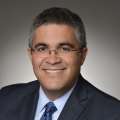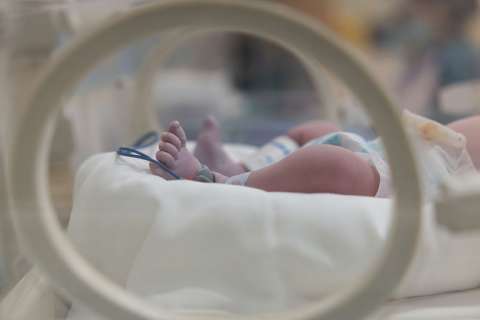The United States continues to experience an epidemic of drug overdose deaths, primarily due to opioids. The problem doesn’t just affect adults. Nearly 9,000 children and adolescents died between 1999 and 2016 from prescription and illicit opioid poisonings, with mortality rates tripling over those years.
Most opioid-related hospitalizations and deaths among children are associated with legally obtained narcotics, such as medications prescribed by a physician. Many of these opioids are prescribed for pain control after surgery but go unused.
In a new study, pediatric orthopedic surgeons at UCLA found that educating parents and providing disposal bins were not enough to compel parents to get rid of these leftover medications. Something more is needed for effective narcotic stewardship, they say.
Below is an edited conversation with the authors of the study, Mauricio Silva, MD, and Rachel M. Thompson, MD, in the Department of Orthopaedic Surgery at the David Geffen School of Medicine at UCLA. Dr. Silva is a clinical professor, vice chair of clinical operations, and medical director of Luskin Orthopaedic Institute for Children. Dr. Thompson is an assistant clinical professor-in-residence, director for the UCLA/OIC Center for Cerebral Palsy, and the William and Patricia Oppenheim Presidential Chair in Pediatric Orthopaedics.
What is the role of opioids in your practice?
Dr. Rachel Thompson: We use multimodal pain control that includes anti-inflammatories, non-opioid and opioid medications. Opioids are not unsafe drugs in and of themselves, and they should be used safely.
Dr. Mauricio Silva: In our division, we've been working very hard to minimize the number of opioids we prescribe. When my partner is doing a surgery where they are fixing the entire spine, that patient is going to be in the hospital for a few days and opioids are going to be quite necessary. But when I am fixing an elbow, I'm prescribing only Tylenol and ibuprofen. We really are changing the way we practice based on the types of procedures that we do.
Why do opioids end up as leftovers?
Dr. Thompson: Parents are not exactly sure when to give narcotics and when not to. There's a fair amount of research demonstrating that parents under-treat their child's pain because they are fearful to use “too much.” This leads to a glut of leftover opioids. We found that in our own study too.
Dr. Silva: A very specific example is the most common elbow fracture in children – a supracondylar fracture. Typically, most surgeons will prescribe 5-10 doses of opioids for breakthrough pain. But in many studies, most of these patients are not taking any opioids or only taking a couple of doses. And so that leftover medication is going to stay at home.
What is happening with these leftover medications?
Dr. Thompson: About 50 to 90 percent of narcotic doses go unused in the United States. Most of those are just kept in the cupboard and not locked away. Either the child that was prescribed the narcotics or a sibling then may start using them. Teenage siblings are who we're most concerned about. That’s actually how this problem commonly begins – the biggest predictor of deaths from opioids is abusing prescription drugs, which can commonly lead to the use of illicit drugs and ultimately overdosing.
Previous studies have looked at education and retrieval efforts for leftover narcotics and found that they don’t work. How does your study differ?
Dr. Thompson: In our study, we have this great mix of patient diversity: English speaking, Spanish speaking, Medi-Cal, PPO, HMO. We were able to show that it really doesn't matter. It's not patient specific. It's a failure on the lack of the health system, the public health system, that parents are keeping these narcotics. I think the bias is that [people think] “not in my family, not people that look like me, not people that have my education.” That's just not the case.
What will it take to get these leftover medications out of homes?
Dr. Silva: If you think about these families, they only have the option to bring the medications back when they come and see us. As a parent, though, I'm probably going to forget to bring the medication to the appointment. But if [disposal bins] were available at every drug store, at every pharmacy, in neighborhood locations like the library, it would make it easier for me and other parents to dispose of these leftovers. That's what it will take. Our results are a very good starting point for us to understand what is happening so that we can try to uncover barriers to success and increase access in the community.
Dr. Thompson: We need a lot more resources from the health care system, for a more multi-pronged approach. Pre-operative education plus text messages, e-mails and phone calls to remind parents. Specifically, at UCLA, we’ve created a video for parents about appropriate pain control measures and narcotic retrieval. Families that are signed up for surgery at UCLA Mattel Children’s Hospital will get that video before they leave the hospital in the future.
What advice would you give to a parent or caregiver regarding narcotics?
Dr. Thompson: If your child is prescribed opioid medications as part of multimodal pain control, it's safe to use if it's used as directed. We shouldn't under-treat pain because we're scared that our children are going to have an addiction.
The corollary is that when you have leftover narcotics, please bring any medications to each clinic appointment. We have safe narcotic disposal bins at UCLA Ronald Reagan Hospital, UCLA Santa Monica Hospital and Orthopaedic Institute for Children.




